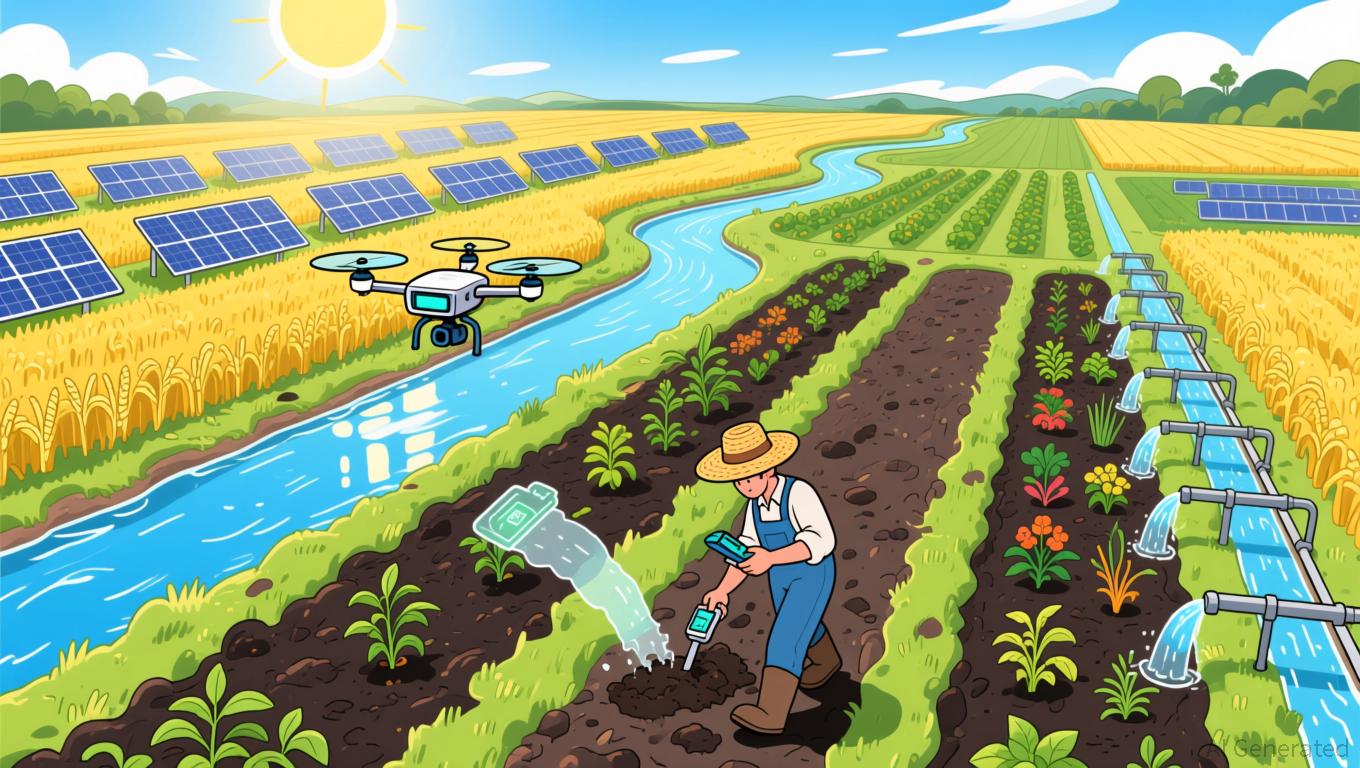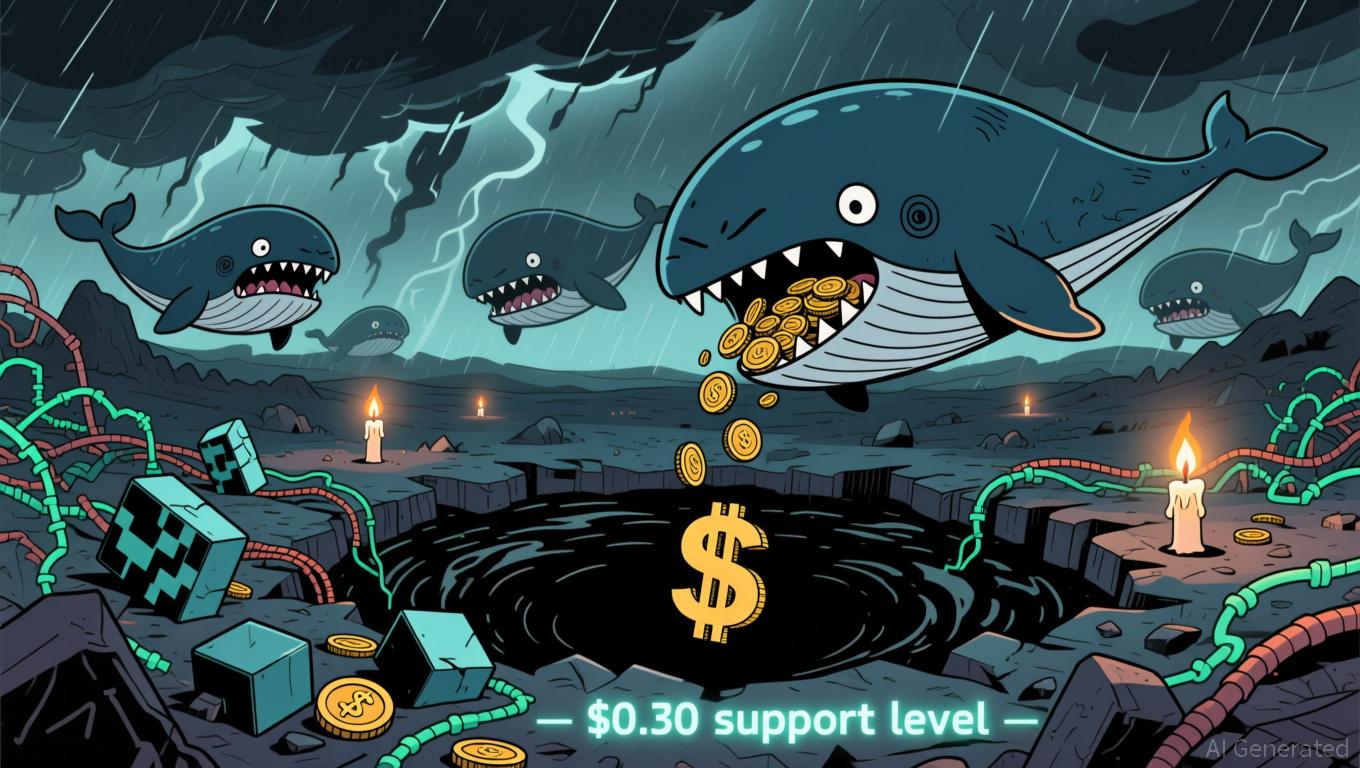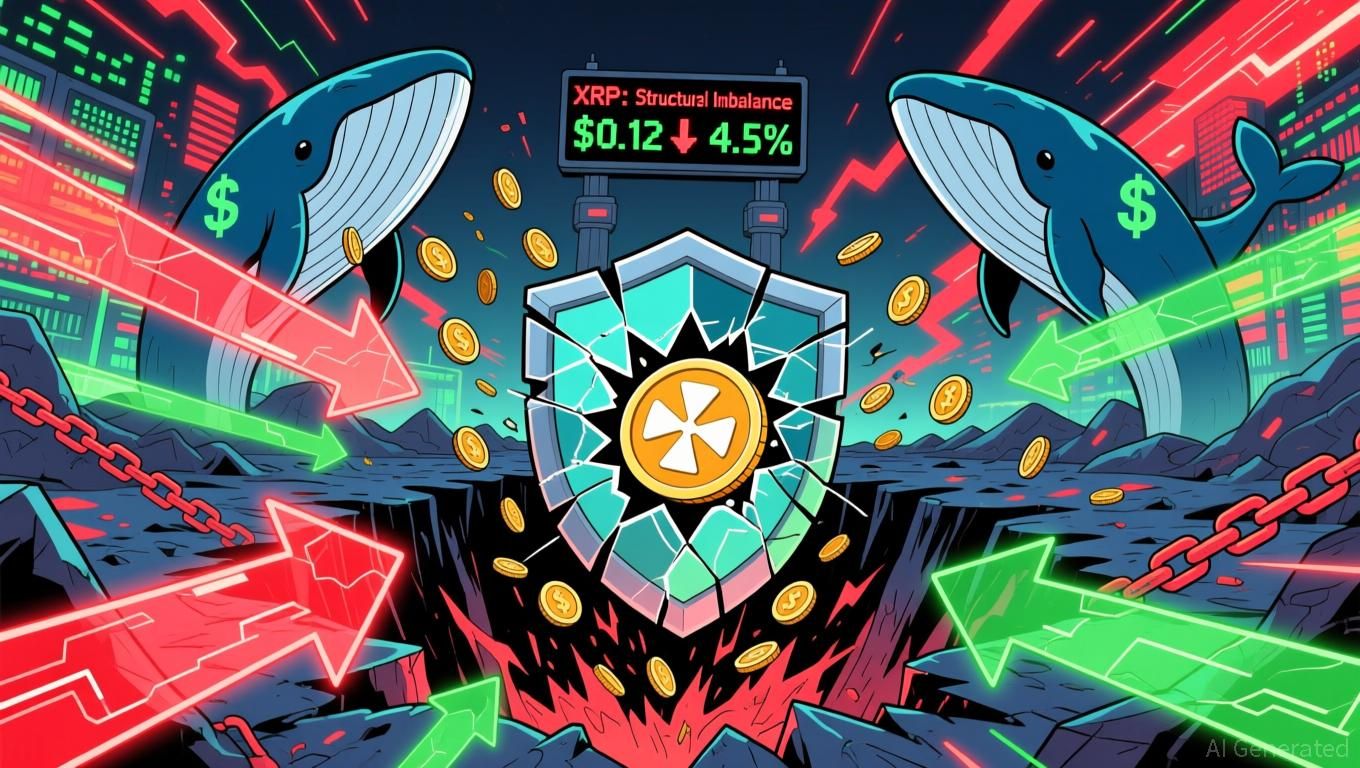Farmers Struggle for Water Amid the Growth of AI Data Centers
- AI infrastructure's rising energy and water demands clash with agriculture's resource needs, straining global grids and water supplies. - U.S. farmers face higher costs as data centers drive up electricity prices and deplete water in drought-prone regions. - Initiatives like Honda's regenerative agriculture program and autonomous farming robots aim to mitigate resource conflicts through sustainability. - Policy responses, including U.S. farm relief plans and COP30 climate negotiations, highlight agricult
The increasing consumption of electricity and water by artificial intelligence (AI) infrastructure is causing concern within the agricultural industry, as resources traditionally dedicated to farming are now being diverted to power-hungry data centers. Although AI is often touted for its future potential to enhance productivity, immediate pressures on power grids and water reserves are already sparking demands for regulatory action and sustainable solutions to ensure that technological progress does not undermine food security.
The environmental impact of AI is drawing significant attention, with data centers—currently responsible for 2% of the world’s electricity use—expanding rapidly to satisfy growing computational needs. In China, the rapid development of AI-focused “smart computing centers” has resulted in an excess of largely idle facilities, many of which draw substantial energy while operating far below capacity. This phenomenon is reflected globally, as data centers contribute to rising electricity costs in places like the U.S. and Europe, putting additional financial strain on energy-reliant sectors such as agriculture. At the same time, the heavy water usage required for cooling these centers further depletes local water resources, a challenge that is particularly severe in drought-affected agricultural regions.
The conflict between AI’s appetite for resources and the requirements of agriculture is especially pronounced in the United States, where farmers are contending with reduced water availability and escalating energy expenses. Honda’s recent partnership with the Carbon by Indigo initiative to promote regenerative farming practices is one example of efforts to ease these challenges. By investing in soil health and water-saving methods across 214,000 acres, the company seeks to strengthen resilience against resource shortages while also cutting carbon emissions.

Market forces are also evolving in response to these issues. The autonomous agriculture robot market,
Governments are beginning to respond with policy measures.
The conversation about AI’s environmental effects extends beyond just energy and water.
As AI’s reach grows, there is a growing recognition among stakeholders of the need for cooperation. “Remember, we still need to produce food,” industry leaders caution, stressing that advances in AI should not jeopardize the stability of agriculture. With both data centers and farms competing for limited resources, future solutions will depend on innovations that maximize efficiency and policies that ensure fair allocation.
Disclaimer: The content of this article solely reflects the author's opinion and does not represent the platform in any capacity. This article is not intended to serve as a reference for making investment decisions.
You may also like
Cardano News Update: ADA Faces $0.30 Battle as Whale Sell-Offs and Network Issues Combine for Turbulent Conditions
- ADA faces critical pressure as network glitches and whale-driven sell-offs push price near $0.30 support level. - Nov 21 mainnet slowdown and whale's $6M loss via USDA swap triggered 13.7% 24-hour ADA drop to $0.47. - Technical indicators show oversold RSI (34.23) and broken key supports, with $0.30 floor now at risk of capitulation. - Upcoming Midnight NIGHT token launch (Dec 8) offers potential catalyst, but liquidity challenges persist amid bearish momentum.

XRP News Update: XRP ETF Achieves Milestone While Prices Drop Amid Whale Activity
- XRP ETF's 2025 debut saw $250M inflows but XRP price fell below $2 within 48 hours due to whale selling and low liquidity. - Whale accounts offloaded 200M XRP tokens post-launch, exacerbating structural imbalance with 41.5% of supply still in loss positions. - ETF's in-kind creation mechanism masked true inflow scale, contrasting with Bitcoin ETFs' $866M outflows showing market caution. - Analysts predict 2026 turning point for XRP, emphasizing need to resolve whale concentration and liquidity gaps befor

Bitcoin Updates: Institutions Increase Bitcoin ETF Investments During Market Volatility
- U.S. Bitcoin ETFs saw $238M net inflow on Nov 21, reversing weeks of redemptions, despite BlackRock’s IBIT logging a $523M outflow earlier in the month. - Fidelity’s FBTC and Grayscale’s BTC attracted $192.9M inflows, reflecting a shift to lower-cost ETFs amid volatile markets and regulatory uncertainty. - Institutional investors like Harvard boosted IBIT holdings by 257%, signaling long-term confidence in Bitcoin as a strategic reserve asset despite short-term turbulence. - Ethereum ETFs faced $262M out

Bret Taylor’s Sierra surpasses $100 million in annual recurring revenue in less than two years